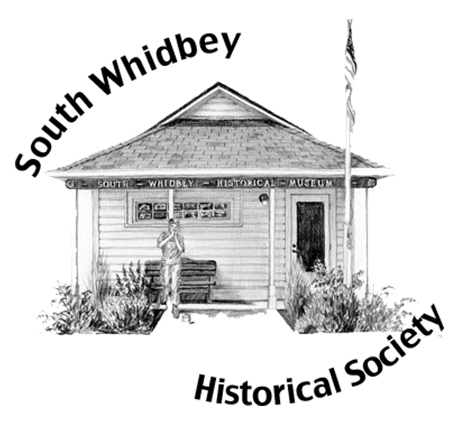Into the unexplored, untamed wilderness of dense forest, wild animals, tangled underbrush and Indians that was South Whidbey in 1850 there came a twenty-six year old Virginian, Robert Bailey, a trader intent on doing business with the Indians. His destination was the village of Digwadsh on the southern tip of the island.
He must have been impressed by the lush abundance of the place and the friendliness of the Indians because he took up residence on the land abutting the beautiful, horse-shoe shaped bay which was later to bear his name, Bailey’s Bay. On September 1, 1852 he filed a claim in the United States Land Patent office in Washington, D. C. on land described as:
Lot Four, Section Twelve; lots one, two, three and four, Section Thirteen; and the northeast quarter of the northeast quarter of Section Fourteen, Township Twenty-eight, North, Range Three, East Willamette Meridian, containing eighty-two and fifty hundredths acres.
Thus Bailey became the first recorded white land owner on South Whidbey and among the first on the entire island. He married a woman from the Digwadsh village and settled down to the business of establishing a home and a trading post on his land.
About six months after Bailey settled on the outskirts of Digwadsh, a man named Zacheus Lewman advertised in Olympia’s pioneer newspaper, The Columbian, March 1853, for coopers to work at his ’’Scadget” Head Fishery adjacent to the Indian village at the head of the bay on South Whidbey. A later article the following August reported that several coopers were at work there making barrels to hold salted salmon for shipping and storage. It would appear that the salmon were obtained from Indian fisherman because, shortly after 1877, when the island Indians began to move to the Tulalip reservation, the cooperage settlement was abandoned.
There are no records available to indicate that Lewman filed a claim for land ownership, but the same year that he started barreling operations on Bailey’s Bay, another white man staked a claim several miles to the northwest on the western shore. On November 20, 1853 Raphael Brunns filed on three hundred twenty acres on Mutiny Bay/South Whidbey’s first two recorded land owners differed greatly in their approach to their land. Bailey used his land to establish a permanent home and a business, gradually increasing his holdings to about 350 acres extending from the Bay to the eastern shoreline of Possession Point. By 1859 he had established his trading post, had become Indian agent for the Snohomish, Snoqualmie, Skykomish and Stillaquamish tribes totalling about sixteen hundred members. His home had been designated by the County Commissioners a polling place for the newly formed Scatchet Head voting precinct which extended from Scatchet Head to Holmes Harbor. He and his wife also had become the parents of two sons and a daughter.
By 1859, Raphael Brunns, not only had not established a home on his Mutiny Bay claim but had used it as collateral to finance a store in Coupeville and other business ventures, all of which became involved in lawsuits. Eventually his South Whidbey land passed into receivership to satisfy his debts.
As far as is known, Bailey had no permanent white neighbors in the Scatchet Head vicinity until 1888; his children grew up with Indian playmates. His son Henry married a Digwadsh girl and they had two sons Henry and George, and a daughter, Laura. The year Laura was sixteen, William Jewett arrived from Indiana and took out homestead rights on the land next to the Baileys. The following year, 1889, he and Laura were married.
William Jewett, like his father-in-law, was a homemaker. He built a house on his property and he and Laura settled down to the business of developing a farm and raising a family. They became the parents of three children, Eva Grace, Joseph and Elmer. Joseph’s daughter, Esther Jewett House, lived on the Jewett property until her death, February 6, 1981.
Another grandchild of Robert Bailey, George Bailey, who was living on the Tulalip Indian reservation in March, 1980, reported that he, his brother Henry Bailey who is a C.P.A., and their father were active participants over the years in the Snohomish tribal struggle with the Federal Land Claims office to obtain payment for their land on South Whidbey under treaty rights.
Bailey’s Bay has been renamed, Cultus Bay, although many old time residents still refer to it by its former name.
Bailey Road still carries Robert Bailey’s name and connects Scatchet Head area with Maxwelton.
Jewett Road, which leads from the Bailey Road to the Glendale Road, was named for William Jewett. Remnants of the Indian village of Digwadsh, and the adjacent Indian burial ground, are found occasionally around the bay.
